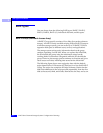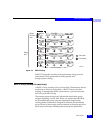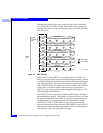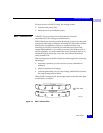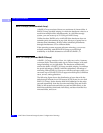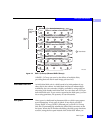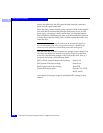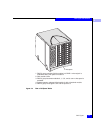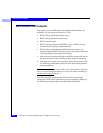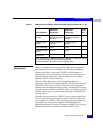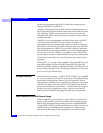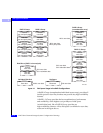
2
2-12
EMC Fibre Channel Storage-System Configuration Planning
RAID Types and Tradeoffs
RAID Benefits and Tradeoffs
This section reviews RAID types and explains their benefits and
tradeoffs. You can create seven types of LUN:
• RAID 5 Group (individual access array)
• RAID 3 Group (parallel access array)
• RAID 1 mirrored pair
• RAID 1/0 Group (mirrored RAID 0 Group); a RAID 0 Group
mirrored by the storage-system hardware
• RAID 0 Group (nonredundant individual access array); no
inherent high-availability features, but can be software mirrored
if the operating system supports mirroring
• Individual unit; no inherent high-availability features but can be
software mirrored, if the operating system supports mirroring
• Hot spare; serves only as an automatic replacement for any disk
in a RAID type other than 0; does not store data during normal
system operations
Plan the disk unit configurations carefully. After a disk has been bound into a
LUN, you cannot change the RAID type of that LUN without unbinding it,
and this means losing all data on it.
The following table compares the read and write performance,
tolerance for disk failure, and relative cost per megabyte (Mbyte) of
the RAID types. Figures shown are theoretical maximums.



